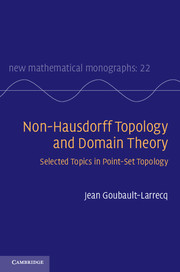Book contents
3 - A first tour of topology: metric spaces
Published online by Cambridge University Press: 05 May 2013
Summary
The most natural way one can introduce topology, and what topology is about, is to explain what a metric space is. A metric space is a set, X, equipped with a metric d, which serves to measure distances between points.
The purpose of this chapter is to introduce the basic notions that we shall explore throughout this book, in this more familiar setting.
However, we must face a conundrum. Imagine we explained what an open subset is in a metric space. In the more general settings we shall explore in later chapters, we would have to redefine opens. Redefinitions are bad mathematical practice, and for a good reason: we would never know which definition we would mean later on; i.e., are the opens we shall use meant to be those introduced in the metric case here, or the more general kind introduced in later chapters? So we shall only talk about sequential opens, not opens, here. Sequential opens will provide particular examples of opens, which we hope should be illuminating. We proceed similarly for sequentially closed subsets. The adjective “sequential” is itself justified by the fact that these notions will be defined through convergence of sequences – and convergence is arguably one of the central concepts in topology.
Metric spaces
Let us describe what a metric space, i.e., a set X with a metric d, is, in intuitive terms first.
The following is a prototypical example of a metric space; whenever one looks for intuitions about metric spaces, we should probably first imagine what is happening there. This example is the real plane. Think of it as a blank sheet of paper, extending indefinitely left, right, up, and down. On this sheet of paper, one can draw points.
- Type
- Chapter
- Information
- Non-Hausdorff Topology and Domain TheorySelected Topics in Point-Set Topology, pp. 18 - 45Publisher: Cambridge University PressPrint publication year: 2013



